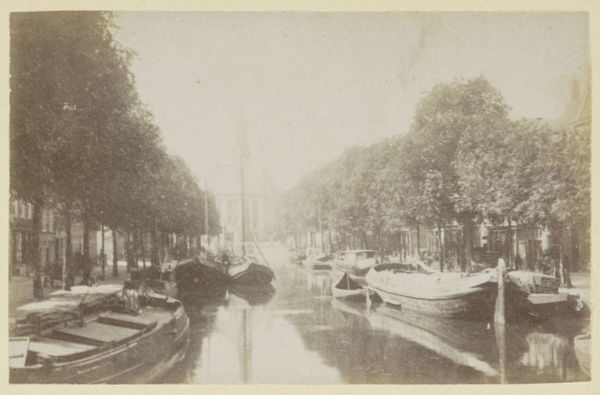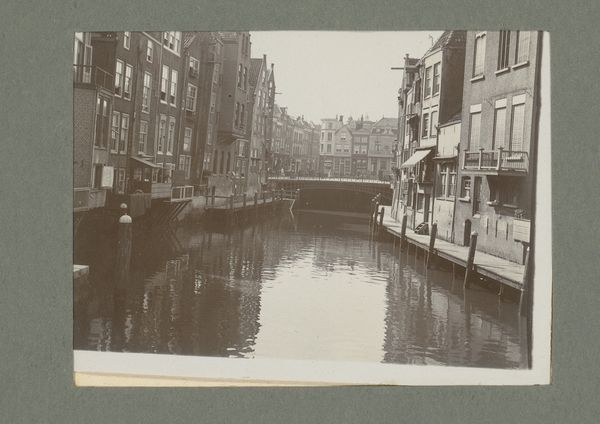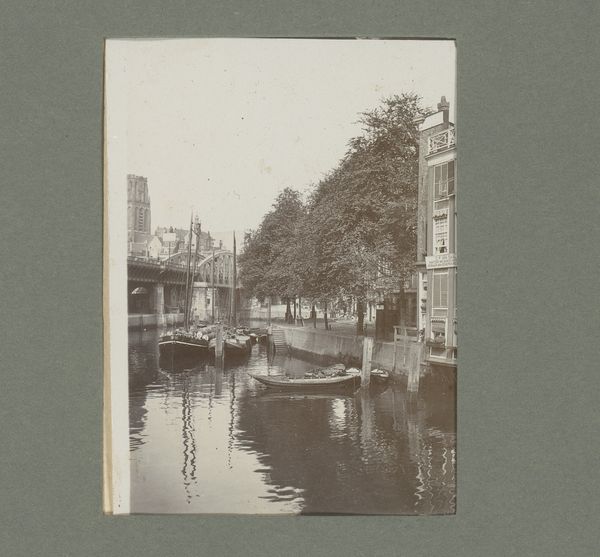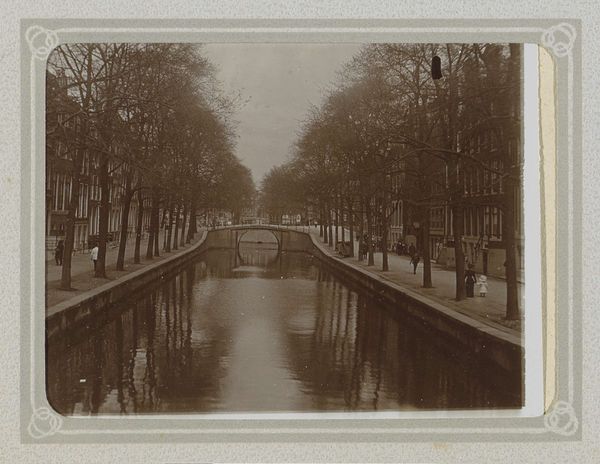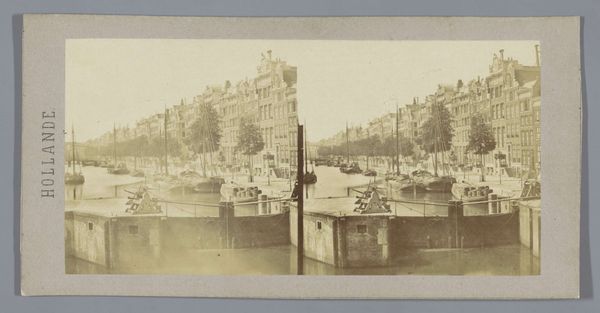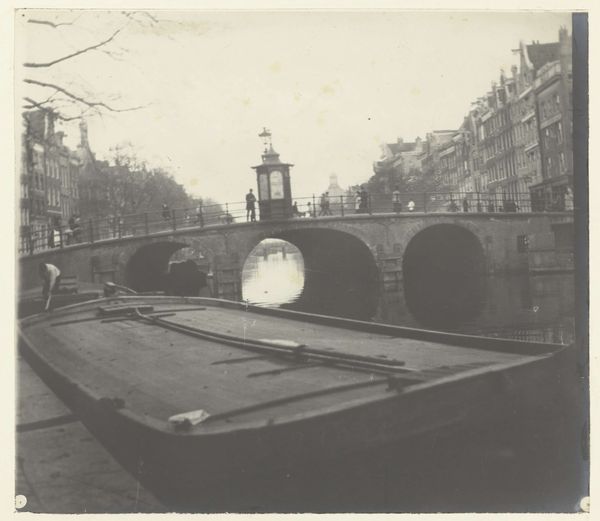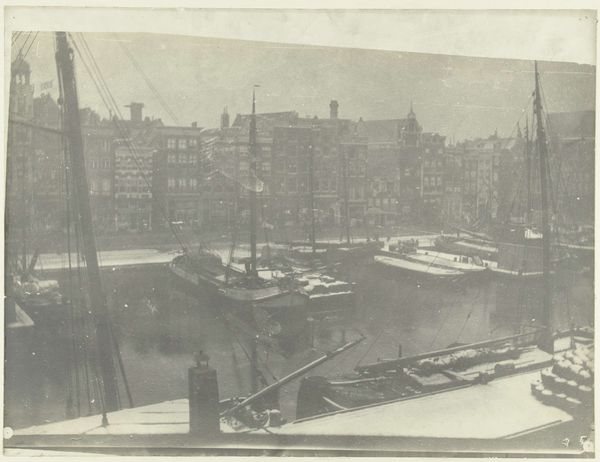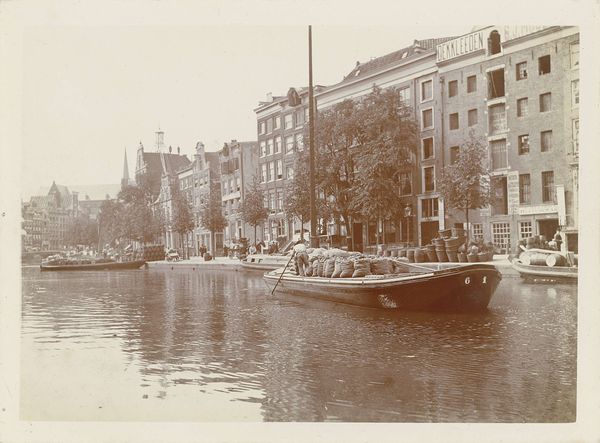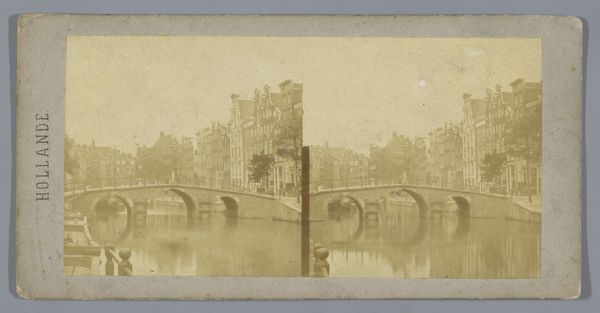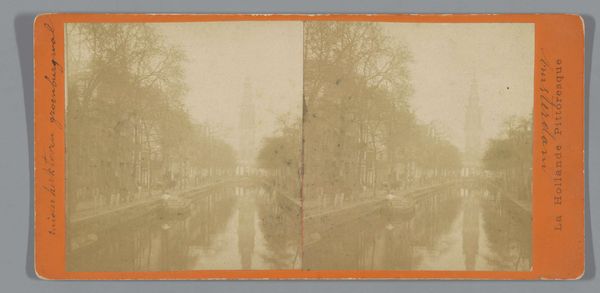
Gezicht op de Korte Prinsengracht in Amsterdam, richting Prinsengracht met Westerkerk 1886 - 1910
0:00
0:00
Dimensions: height 178 mm, width 238 mm
Copyright: Rijks Museum: Open Domain
Curator: Here we have "View of the Korte Prinsengracht in Amsterdam, towards the Prinsengracht with Westerkerk" a photograph by George Hendrik Breitner, dating roughly between 1886 and 1910. Editor: It has a muted palette and almost melancholic tone; the grays really convey the city’s dampness. I also can’t help but focus on the foreground, the immediacy of the photographer is quite amazing. Curator: Breitner's work often captured Amsterdam street life and the working class. As photography was evolving, so was its role in society and how it was perceived. Breitner aimed for a more genuine depiction of modern life, a far cry from studio portraiture of the period. Editor: Absolutely, I'm struck by how utilitarian the image seems—the docks, the simple barges lining the canal, the rough texture of the buildings. The entire scene feels incredibly grounded and working-class. Even the haze adds a tangible grit. Curator: The photographic techniques in this era, the collodion process in particular, created its own texture to the image making that atmospheric haze or muted light something natural. There's also that slight blur due to slower shutter speeds that gives a sense of lived experience. Breitner embraces it all instead of fighting it to convey urban realism. Editor: I think the point of view has impact. From the railings, the view feels democratized. It’s as if the work puts the common individual above the representation of social monuments or idealized visions of landscape. The materiality reflects the life of everyday people going to work and moving their materials by the water. Curator: And the presence of the Westerkerk spire is important though subtly incorporated into the frame, isn’t it? Breitner places everyday labor and lived experience alongside institutions, not above or below them, but as coexisting. This photo demonstrates photography's potential as a medium for social observation. Editor: That kind of art becomes important as the cities grow at the pace that happened in the 19th century, right? Capturing a sense of change and documenting reality is what speaks to me. Curator: Indeed, photography helped shape urban identities and perceptions in that era and beyond, contributing significantly to our understanding of the social fabric of a city like Amsterdam. Editor: It has been amazing to really observe this image; noticing its material relevance allows a much richer understanding. Curator: For me, this view into Breitner’s work always brings a greater look into that period of time and photography’s significance at the time.
Comments
No comments
Be the first to comment and join the conversation on the ultimate creative platform.


